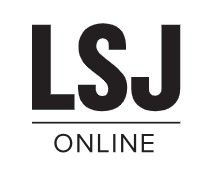Art O’Leary was minding his own business and enjoying his role as a senior civil servant in Ireland’s parliament when the prime minister phoned to offer him a unique job. The self-described middle-aged man with a suit and a comb-over couldn’t have known that he was about to become a social revolutionary.
The newly elected government had promised to create a people’s assembly to discuss revising six articles in the country’s constitution – including the one touching the bombshell question of same-sex marriage.
The PM asked O’Leary to make it happen. “If I understand you correctly,” the civil servant replied after hearing him out, “as long as I don’t spend any money or kill anybody, I can do what I want with this constitutional convention?”
“I knew you were the fella for me,” rejoined Enda Kenny, the then prime minister, or taoiseach, as the Irish call it. “It was 10 years ago this year and nothing astonishes me more than the fact that I’m still telling this story,” O’Leary related to a group in Sydney this week.
He was given a bare office with not so much as a chair. When Kenny promised no money, he meant no money.
O’Leary managed to find a government warehouse full of broken and surplus furniture and begged himself a wastepaper bin, a desk and chair. “I was recycling furniture before it was fashionable,” he says.
From this humble beginning, “Ireland found a way to deal with really, really intractable political problems”. It used constitutional conventions peopled by ordinary citizens “to lead constitutional change in a traditional, conservative, Catholic society on a scale unheard of 20 years ago”.
“Now we continually use it,” O’Leary says, “to the extent that the political parties fight among themselves to put the next subject to a citizens’ assembly.”
Ireland used a citizens’ assembly to deal with an issue so inflammatory that no government wanted to approach it directly – abortion. Same-sex marriage and abortion are now legal in Ireland, and it happened with a minimum of rancour.
Today Ireland is running a citizens’ assembly on biodiversity loss and another on how to structure the local government of Dublin. “Not every issue is suitable for a citizens’ assembly – for example, you could do whether to use nuclear energy, but not on how to design a nuclear plant,” suggests O’Leary.
After speaking to audiences in 18 countries in the past four months, O’Leary says “there’s a hunger everywhere for more citizens’ engagement”.
So hungry that Colombia had to cancel one recently because 5000 people turned up, overwhelming the organisers. “It’s a case of, ‘I have something to say, and no one is listening’ – citizens’ assemblies are a counter to this feeling of disenfranchisement, it’s a global phenomenon.”
The citizens’ assembly is an idea inspired by ancient Athenian democracy where every male citizen over 20 had an automatic right to vote in the assembly. The modern version enjoyed a burst of popularity in the 1980s and a serious resurgence since 2010, so much so that the OECD studied almost 300 citizens’ assemblies from around the world and drew up a set of guidelines in a 2020 report titled Catching the Deliberative Wave.
A citizens’ assembly – or constitutional assembly – doesn’t displace a country’s parliament. It doesn’t have the power to make laws or allocate budgets. But it does seek to guide a legislature. In Ireland’s case, the government and parliament have kept close control.
A representative sample of about 100 to 150 citizens is chosen to meet on weekends, over a number of months, supported by a secretariat, and study an issue closely. They are given objective briefings on the subject and then presented with the arguments from advocates on all sides of an issue. The group then discusses the problem and reports its recommendations to the parliament.
In Ireland’s case, transparency is key. Plenary sessions are broadcast and live-streamed and journalists are present at the back of the room. The government commits to responding to every recommendation and explaining why it’s accepting or rejecting each.
The attraction? This approach removes the political partisanship, entrenched positions and vested-interest lobbying from the deliberative process. It turns out that a well-run citizens’ assembly can not only add to public understanding of an issue but also to public trust in any eventual government action.
O’Leary came to Australia not to proselytise but to learn. He’s been tasked with creating a new institution for Ireland – an independent election authority. He says this is the best place in the world to learn how to do it. “The Australian Electoral Commission is the gold standard,” he tells me.
But, along the way, he’s spoken to a number of audiences about citizens’ assemblies. Including the Albanese government’s Assistant Minister for the Republic, Matt Thistlethwaite.
O’Leary argues that a citizens’ assembly would be “perfect” for dealing with the question of whether and how Australia should hold a referendum on becoming a republic: “It’s big and national with lots of options. It would provide time and space for everybody to give their opinion and talk respectfully.”
Thistlethwaite is interested: “We are considering it for the republic, particularly as a means of educating Australians about the issue and trying to come to a consensus about the model,” he tells me. “I’m deeply conscious that the monarchists in the 1999 referendum called it a politicians’ model.”
“Looking at the facts, hearing from both sides, making recommendations to government without politicians’ involvement – it’s definitely worth considering,” Thistlethwaite says. “A big issue will be explaining to younger people; they’re looking for more transparency and accountability in the way government operates. I think this is a great way to look at an issue, engage Australians and give them a voice.
“If we used it, we’d use it as a consultative body with recommendations and advice to government.” The federal government has said it will consider holding a referendum on this in the next term of parliament.
More immediate is the question of whether to create an Indigenous Voice to Parliament, enshrined in the constitution. The Albanese government has promised to bring this referendum to the people during the term of the current parliament.
The Minister for Indigenous Australians, Linda Burney, has carriage of this. Could a citizens’ assembly be useful? “It has potential value,” she tells me. “It’s potentially a very good idea, but I haven’t considered it seriously. One step at a time.”
The government already has announced a consultation process for the Voice referendum. Is it not too late to add another step? “No, not at all,” says Burney. She didn’t meet O’Leary on his Australian visit this week but said she wanted to speak with him.
O’Leary says it’s important that a country’s first national citizens’ assembly should succeed. Many fail. Design is all. In Ireland’s case, its first constitutional convention – on same-sex marriage – comprised 66 citizens and 33 politicians.
A citizens’ assembly including politicians? There was good and bad, reports O’Leary. The bad was trying to enforce equal voice: “We had a job to shut down the minister to give the bus driver a say.” The good was that the parliament had a sense of ownership when the assembly’s report arrived.
Plus, the experience improved the people’s impressions of politicians: “People said the politicians were more knowledgeable than they’d suspected, and they worked a lot harder – ‘they work all the time’.”
Another surprise bonus from one citizens’ assembly? A woman who thanked the organisers for choosing her husband for a group – he’d started watching the news and reading the papers and they were having much more interesting conversations at dinner.
The Gillard government gave Australian politicians a bit of a phobia of citizens’ assemblies, says a local authority on the subject, Iain Walker of the New Democracy Foundation. When it proposed a citizens’ assembly on climate change, it was roundly ridiculed and the government quickly abandoned it.
But New Democracy has been rehabilitating the idea. It’s operated 32 citizens’ assemblies in Australia at various levels, none national. Some, like the one on South Australia’s potential as a site for global nuclear waste, failed. Others, like the one on how the City of Melbourne could cut its chronic deficits, was a success.
Years after retiring, Enda Kenny was asked to name his greatest achievement as prime minister. He didn’t boast of reducing Ireland’s unemployment rate from 15 per cent to 4 per cent. His outstanding achievement, he said, was the citizens’ assemblies.
By Peter Hartcher, Political and international editor of the Sydney Morning Herald, published October 15, 2022




